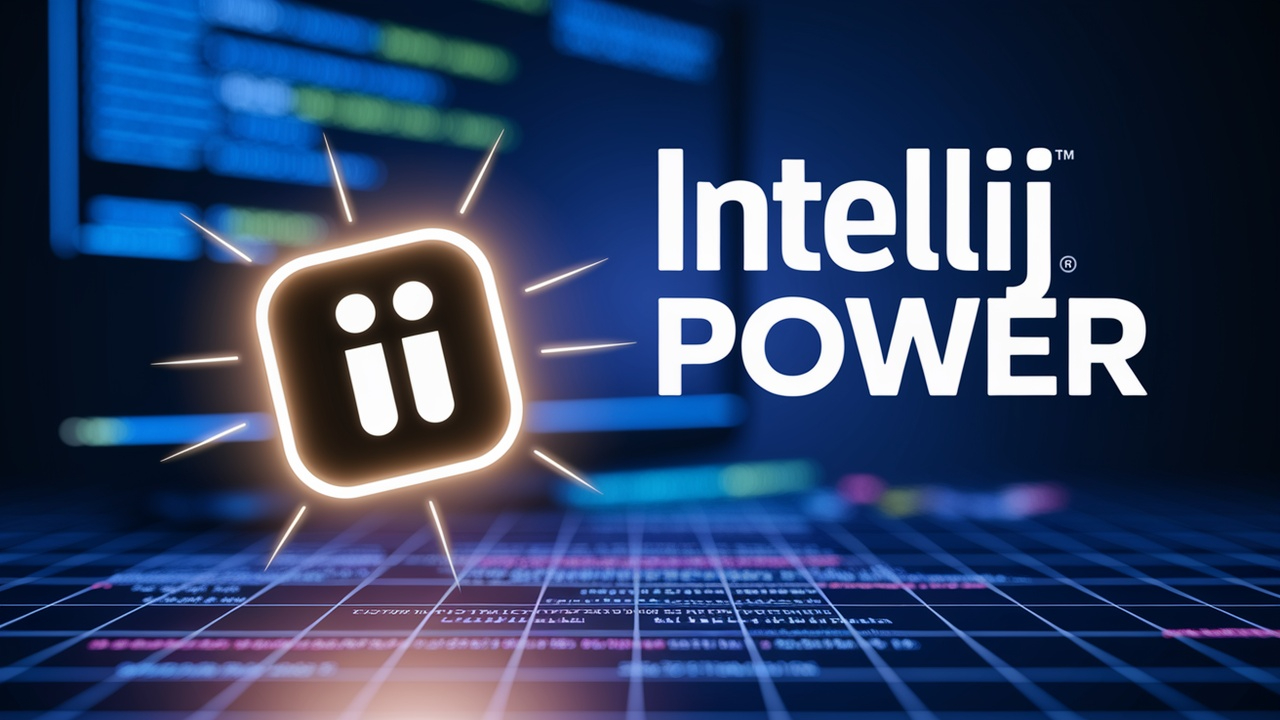
This comprehensive course provides an in-depth exploration of IntelliJ IDEA, a powerful Java IDE used by developers worldwide. Participants will learn to navigate the interface, utilize advanced features, and optimize their coding workflow, ultimately enhancing their software development skills.
Course Levels
-
Level 1: Introduction to IntelliJ IDEA
This level introduces the basics of IntelliJ IDEA, including installation, interface navigation, and fundamental features.
-
Level 2: Project Management in IntelliJ
This level focuses on managing projects effectively within IntelliJ IDEA, including project structure and configuration settings.
-
Level 3: Advanced Editing and Refactoring
This level dives into advanced editing capabilities and refactoring techniques to improve code quality and maintainability.
-
Level 4: Debugging and Testing
Learn how to effectively debug applications and write tests using IntelliJ IDEA's built-in tools.
-
Level 5: Integration and Deployment
This level covers integrating external tools, frameworks, and deploying applications using IntelliJ IDEA.
-
Level 6: Customization and Productivity
Enhance your productivity by customizing IntelliJ IDEA and utilizing plugins to streamline your workflow.
-
Level 7: Advanced Features and Best Practices
Explore advanced features of IntelliJ IDEA and software development best practices for professional developers.
Course Topics
-
Topic 5: Performance Optimization Techniques
# Performance Optimization Techniques Performance optimization is crucial to ensure that applications run efficiently and effectively. In this section, we will explore various performance optimizatio...
-
Topic 1: Code Completion and Suggestions
# Code Completion and Suggestions in IntelliJ IDEA Code completion in IntelliJ IDEA is a powerful feature that enhances productivity by providing intelligent suggestions as you write code. This funct...
-
Topic 3: Writing Unit Tests with JUnit
# Writing Unit Tests with JUnit Unit testing is a crucial part of software development that ensures individual components of your application work as intended. In this section, we will explore how to...
-
Topic 4: Test-Driven Development (TDD) Practices
# Test-Driven Development (TDD) Practices Test-Driven Development (TDD) is a software development process that relies on the repetition of a very short development cycle. The essence of TDD is to wri...
-
Topic 1: Integrating with CI/CD Tools
# Integrating with CI/CD Tools Continuous Integration (CI) and Continuous Deployment (CD) are essential practices in modern software development. They help automate the software delivery process, ens...
-
Topic 1: Using Docker with IntelliJ IDEA
# Using Docker with IntelliJ IDEA ## Introduction Docker is a powerful tool that allows developers to automate the deployment of applications inside lightweight, portable containers. Integrating Dock...
-
Topic 5: Introduction to Version Control Integration
# Introduction to Version Control Integration Version control systems (VCS) are essential tools for software development, allowing teams to manage changes to source code over time. This topic will in...
-
Topic 2: Advanced Refactoring Techniques
# Advanced Refactoring Techniques Refactoring is a critical part of software development that improves the design, structure, and implementation of code without changing its external behavior. In thi...
-
Topic 2: Analyzing Variables and Call Stack
# Analyzing Variables and Call Stack Debugging is a critical skill in software development, and understanding how to analyze variables and the call stack is essential for troubleshooting issues effec...
-
Topic 4: Using Build Tools (Maven/Gradle)
# Using Build Tools (Maven/Gradle) In modern software development, build tools are essential for managing project dependencies, automating builds, and facilitating the deployment process. In this sec...
-
Topic 2: Working with RESTful Services
# Working with RESTful Services REST (Representational State Transfer) is an architectural style for designing networked applications. It relies on a stateless, client-server communication model and ...
-
Topic 4: Using Application Servers with IntelliJ
# Using Application Servers with IntelliJ ## Introduction In modern software development, integrating application servers into your development environment is crucial for testing and deploying applic...
-
Topic 3: Best Practices for Code Reviews
# Best Practices for Code Reviews Code reviews are an essential part of the software development process, ensuring code quality, improving team collaboration, and fostering knowledge sharing. Impleme...
-
Topic 4: Continuous Integration and Deployment Strategies
# Continuous Integration and Deployment Strategies Continuous Integration (CI) and Continuous Deployment (CD) are crucial practices in modern software development that help ensure the quality, reliab...
-
Topic 3: Keyboard Shortcuts and Productivity Tips
# Keyboard Shortcuts and Productivity Tips In this section, we’ll explore the power of keyboard shortcuts in IntelliJ IDEA and how they can significantly enhance your productivity. By mastering these...
-
Topic 2: Integrating with Databases
# Integrating with Databases Integrating databases into your applications is crucial for managing data effectively. In this section, we will explore how to use IntelliJ IDEA to connect to various dat...
-
Topic 4: Using the IntelliJ IDEA Terminal
# Using the IntelliJ IDEA Terminal The IntelliJ IDEA Terminal is a powerful tool integrated within the IDE that allows you to run command-line operations without switching to an external terminal app...
-
Topic 5: Introduction to Module Management
# Introduction to Module Management Module management is a critical aspect of project management in IntelliJ IDEA. It allows developers to organize their codebase into manageable sections, improving ...
-
Topic 1: Installing IntelliJ IDEA
# Installing IntelliJ IDEA IntelliJ IDEA is a powerful Integrated Development Environment (IDE) designed for Java development, but it also supports a wide range of other programming languages. In thi...
-
Topic 2: Navigating the User Interface
# Navigating the User Interface in IntelliJ IDEA IntelliJ IDEA is a powerful integrated development environment (IDE) used primarily for Java development. Its user interface (UI) is designed to provi...
- And 15 more topics...